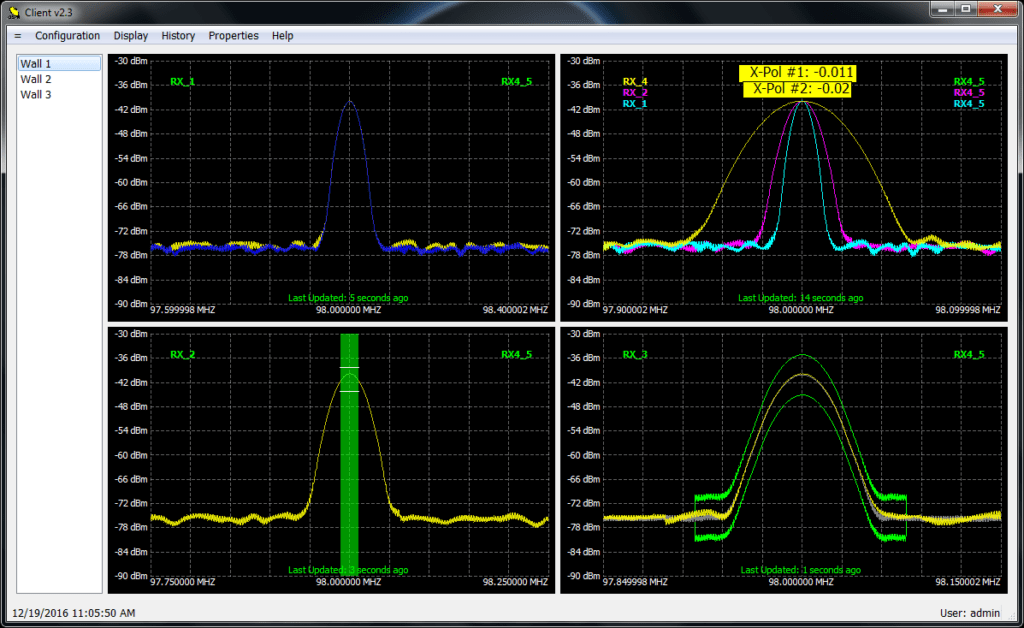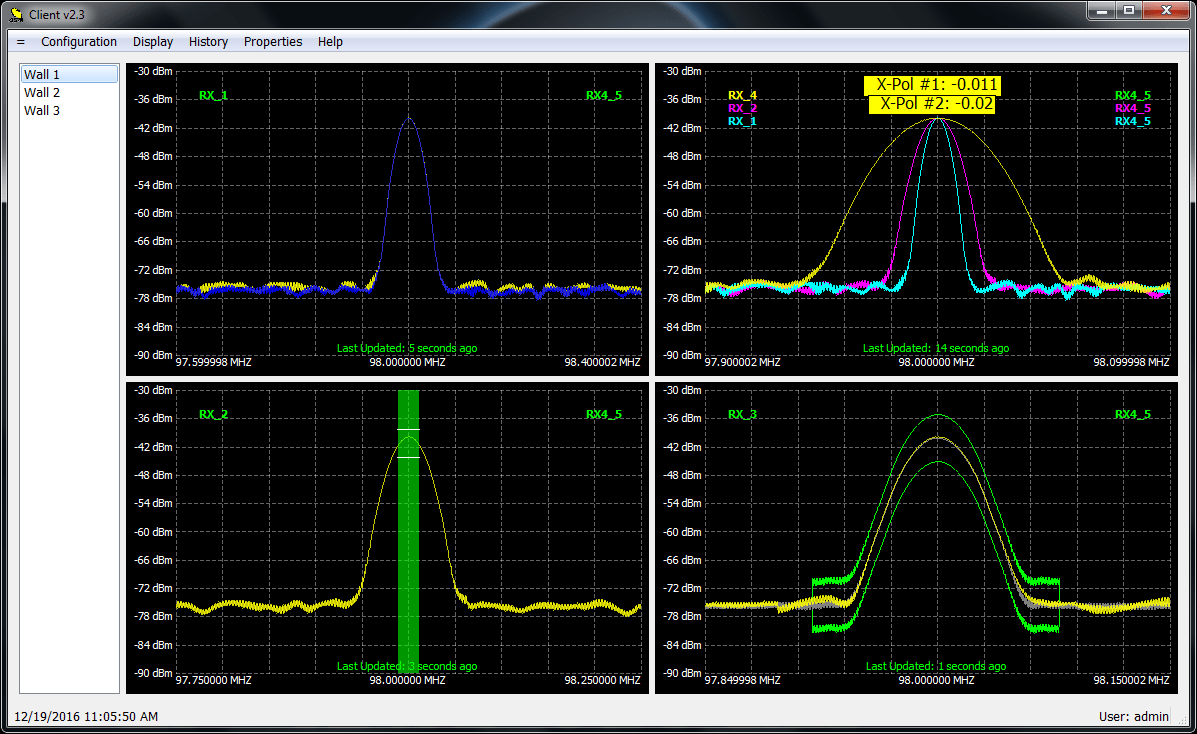Monitoring the Spectrum
Monitoring the Spectrum: Building Your Own Distributed RF Scanner Array
Software-Defined Radio (SDR) has increased in popularity in recent years due to the decrease in hardware costs and increase in processing power. One example of such a class of devices is the RTL-SDR USB dongles based on the Realtek RTL2832U demodulator. This talk will discuss my experience in building a distributed RF scanner array for monitoring and spectrum mapping using such cheap SDR devices. The goal is to help the audience understand the what, why, and how of building their own RF monitoring array so that they will be able to do it themselves. In this era of increasingly being “watched”, we must be prepared to do our own “watching”.

Software-Defined Radio (SDR) has increased in popularity in recent years due to the decrease in hardware costs and increase in processing power.One example of such a class of devices is the RTL-SDR USB dongles based on the Realtek RTL2832U demodulator. This work investigates building and running an RF scanner array for monitoring and spectrum mapping using cheap SDR devices. The array allows for both RF sampling and power analysis to be split over multiple systems in order to increase capture and spectrum analysis capabilities. The system allows for “strong signal capture” as well as, simply, signal modeling with “strong signal alerting”. Also discussed will be using the array versus USRPs and the issue of antennae for all of the devices. I will explain the mistakes I made in building the array and what I did to attempt toovercome such pitfalls. The code for running the array will be introduced and released for public consumption. In addition, while we target the RTL-SDR devices, we will discuss the feasibility of including non-traditional SDR hardware in the array, including non-Realtek tuner cards and inclusion of HackRF devices.
Speaker: Andrew Reiter (arr,awr)
EventID: 5142
Event: 30th Chaos Communication Congress [30c3] by the Chaos Computer Club [CCC]
Location: Congress Centrum Hamburg (CCH); Am Dammtor; Marseiller Stra™e; 20355 Hamburg; Germany
https://www.youtube.com/watch?v=r5BTUVPeoVY
Monitoring the spectrum involves the process of analyzing and tracking radio frequency (RF) signals across a range of frequencies. Building your own distributed RF scanner array can be a complex but rewarding project that allows you to monitor and analyze RF signals in your environment. Here’s a general overview of the steps involved in building such a system:
1. Define Your Requirements: Determine the specific frequencies you want to monitor and the geographical area you want to cover. Consider factors such as antenna placement, signal sensitivity, and data storage capacity.
2. Select Hardware: Choose the appropriate hardware components for your RF scanner array, including software-defined radios (SDRs), antennas, amplifiers, filters, and other necessary equipment. Make sure the hardware is compatible with your monitoring objectives and budget.
3. Design Antenna Arrays: Design and construct antenna arrays for receiving RF signals. Consider factors such as antenna type (e.g., dipole, Yagi, patch), polarization, gain, and directionality. Distribute antennas strategically to maximize coverage and minimize interference.
4. Set Up SDRs: Configure and set up your SDRs for data acquisition. Install and configure software packages such as GNU Radio, SDR# (SDRSharp), or RTL-SDR to interface with the SDR hardware and capture RF signals.
5. Develop Signal Processing Software: Develop or configure signal processing software to analyze and process the captured RF data. Implement algorithms for signal detection, demodulation, decoding, and analysis, depending on your monitoring objectives.
6. *Implement Networking*: Set up networking infrastructure to connect and synchronize multiple SDRs distributed across different locations. Use Ethernet, Wi-Fi, or other communication protocols to transmit RF data to a centralized processing system.
7. Build Data Storage and Analysis Platform: Build or configure a data storage and analysis platform for storing, organizing, and analyzing the captured RF data. Use databases, file systems, or cloud storage services to manage large volumes of data effectively.
8. Deploy and Test: Deploy your distributed RF scanner array in the field and conduct extensive testing to ensure proper operation and performance. Validate the system against known RF signals and verify its ability to detect and analyze signals of interest.
9. Monitor and Maintain: Monitor the performance of your RF scanner array over time and perform regular maintenance to ensure continued reliability and accuracy. Update software, calibrate equipment, and address any issues or anomalies as they arise.
Building your own distributed RF scanner array requires expertise in RF engineering, signal processing, software development, and networking. It’s a challenging but rewarding endeavor that can provide valuable insights into the RF environment and contribute to various applications such as spectrum monitoring, wireless communication, and radio astronomy.
